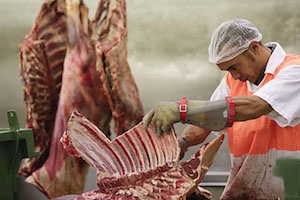Increasing meat exports from the USA to Canada: challenges and prospects
CANADA is one of the US's key trading partners for beef and pork. In recent years, this country has held a stable position among the five largest importers of MEAT from the United States. However, despite significant trade volume, U.S. shipments sometimes face regulatory and documentation hurdles.
One of the steps aimed at simplifying the EXPORT process was the introduction of the PHIS (Public HEALTH Information System) sanitary information system. According to Courtney Heller, DIRECTOR of export services for the US Meat Export Federation (USMEF), the system was designed to improve and speed up border interactions to minimize the time it takes to clear products at the border.
The PHIS system was supposed to reduce the amount of paperwork and reduce the likelihood of human error. All documents, such as forms, certificates and testing requirements , are now integrated into a single electronic system, allowing both USDA and Canadian inspectors to process and sign required documents faster. However, as practice shows, the process of implementing the system was not without difficulties. Heller emphasizes that, despite expectations, the electronic system still requires a significant amount of paperwork, which contradicts the original goals of simplification.
However, both countries have similar food safety and control systems, creating additional opportunities to facilitate trade in red meat. Interaction between US and Canadian regulators can be more effective if there is mutual understanding and agreement on key issues.
USMEF is actively working to remove existing barriers and improve conditions for meat exports. It is important to note that cooperation with Canadian industry partners is one of the main activities of the organization. Information exchange, joint initiatives and educational programs will help increase understanding and trust between countries.
In addition, it is worth noting that the demand for American meat in Canada continues to grow. This is due to the high quality of products and the variety of assortments that the American meat industry offers . Canada, in turn, is also interested in stable supplies of meat from the United States, which makes cooperation between the two countries mutually beneficial.
In conclusion, despite existing challenges such as documentation and regulatory issues, the US and Canada are well positioned to further expand the meat trade. The implementation of the PHIS system and active cooperation between the public and private sectors can significantly improve the export environment and strengthen economic ties between the two countries.




























































